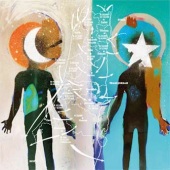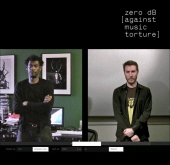Bigger Than Big (EQ Magazine, July 2006)
Over 20 years ago, an inimitable sound came pouring from the British port city of Bristol. Thumping beats mixed with shivering bass glazed with vocals that were as seductive as they were threatening. It was reggae. It was dub. It was hip-hop. It was rock. It was punk. It was a conglomerate of everything, produced in a manner that was unlike anything previously heard. It was Massive Attack.
Collaborating with a pantheon of musical personalities over the years — from David Bowie to Madonna, Tricky to Mos Def — Massive Attack have created a virtual aggregate of relevant audio that is wide-spanning but incredibly focused, always recognizably “Massive Attack.” These experiments in music have recently been assembled in the career retrospect Collected; a part “greatest hits,” part rarities package that reflects years of technological change in both performance and production.
In the olden days, Massive Attack, like all their peers, worked with what amounted to just a series of MIDI controlled “boxes” chained together. Starting with an Atari ST and shifting the Cubase Audio on the Macintosh, everything was separate and an Akai MPC 3000 drove all the beats. With all the elements running live, tweaking was just done on the fly — an invitingly problematic process; with retracing steps to recapture lost vibes being at best frustrating and, at worst, impossible. With the onset of technological advancements, Massive Attack’s studio has shifted from purely hardware-based to somewhat software-laden, with their current set-up revolving around Pro Tools TDM and an Apple PowerMac G5; though they are quick to assure that the live room still gets a good work out. “There is a lot to be said for the way we used to do things,” says longtime producer/collaborator Neil Davidge. “It was tedious, but it took more time to mess around with a sound, its source, rather than just getting something in there, treating and effecting it. To some degree we’re trying to get back to that way of working, but without losing flexibility, because we’re always changing our minds.”
According to the band, every plug-in available is part of their Pro Tools rig, including TASCAM’s GigaSampler (the springboard for their more “traditional” samples), which has taken the place of their trusty MPC 3000. “We’re mixing up a lot between the real stuff and the technology-driven sounds and virtual instruments,” says Davidge. “You get an unusual clash from using the two. There is inevitable difficulty mixing acoustic with electronic, analog, and digital. It’s a case of experimentation in the studio — careful use of tools in terms of the arrangement and how they interact.”
Davidge uses “Live With Me,” a new track found on Collected as an example: “[It’s] a programmed drum pattern, very simple and rooted. That is the mainstay of the track. But the live drum is this military snare drum, which builds through the track. We’ve double tracked that so it diffuses the sound of the live stuff. It works better with the metronomic, electronic part because you get this hazy quality to the live stuff, so it doesn’t really matter that they are slightly out of time with each other.”
Whether it’s via the old tactics and techniques or the new technology, there are definitely certain easily identifiable characteristics of the “Massive Attack sound.” The spine chilling bass, the unpredictably syncopated beats, and their unique interpretation of any number of vocals are among their more notable trademarks. Davidge assures, “We don’t necessarily set out to do Massive Attack ‘things.’ Whenever we’re working a track, we try to treat it as something fresh — not necessarily follow the same rules we played by in the past. For ‘Angel,’ it was just two notes being played, but on one of the inputs on the back we were laying a drum loop into a VCF so you were getting this weird rhythm pattern coming through, like the semi-tone for the bassline . . . but then you have the pulse of the bassline. We put that into the Roland S-750, found the bit we liked, put that into the MPC and ran it live with the beats, and then recorded it.”
Another example of this kind of unorthodox tracking ethos is the distorted bassline halfway through on “Risingson.” “This started as a sample of a tamparaùa — a droning stringed instrument played live by a multi-instrumentalist Indian musician. Sampled onto a keyboard, performed, then put through loads of effect — the Mutronics Mutator for filtering and then through various delays and distortion boxes. The end result is but a convoluted version of what the original sounds started as.”
Davidge continues, “There’s a bass sound on ‘Butterfly Caught’ that’s actually a manipulation of Del Naja’s voice. The original sound sources can come from absolutely anywhere. It’s fewer of these devices that are used and more about the attitude of how you approach a sound and how you take a lateral view to a sound. That’s what creates these ‘trademark’ Massive Attack sounds.”
By Lily Moayeri
http://www.eqmag.com/story.asp?storycode=14908








